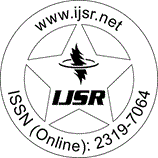Downloads: 115
India | Electronics Communication Engineering | Volume 3 Issue 4, April 2014 | Pages: 741 - 746
An Efficient Method for Deformed Iris Recognition by Extracting Hybrid Features
Abstract: Iris being one of unique feature to identify human, thus iris recognition has become one of the most authenticated and reliable system in the field of security. Main drawback that influences its efficiency is deformation of iris pattern caused by pupil dilation and contraction. In most state-of-the-art, only local iris texture features are used to overcome this problem. In this paper new algorithm is proposed to recognize deformed iris by utilizing simultaneously both geometric and photometric features contained in low pass and band pass regions. Non sub sampled contour let transform (NSCT), is used to eliminate noise and integrate the directional boundary information in different band pass sub bands, using SURF features in maxima image (created using 16 band pass sub bands) and ordinal features in low pass sub bands, matching score is generated. These scores are then used to classify deformed iris image with the iris images present in the database using KNN classifier.
Keywords: KNN Classifier, Iris Recognition
How to Cite?: Summiya Fathima, Richa Golash, "An Efficient Method for Deformed Iris Recognition by Extracting Hybrid Features", Volume 3 Issue 4, April 2014, International Journal of Science and Research (IJSR), Pages: 741-746, https://www.ijsr.net/getabstract.php?paperid=20131587, DOI: https://dx.doi.org/10.21275/20131587
